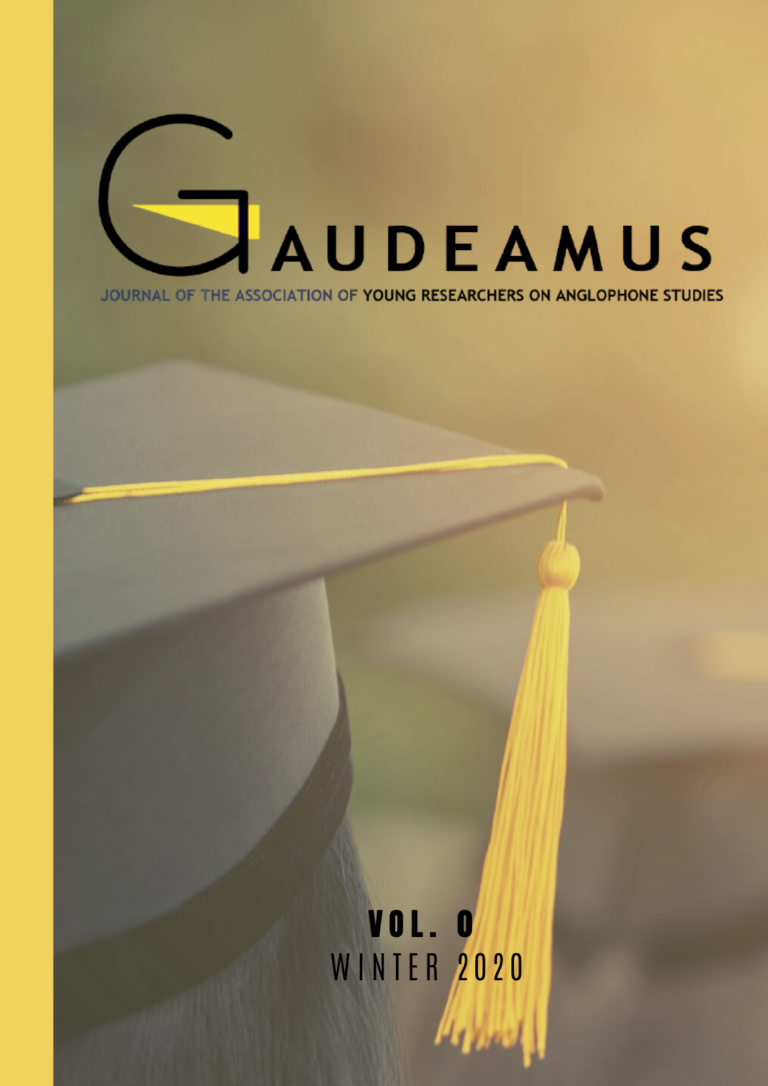Abstract
This note focuses on the case of Scots as an enregistered variety, in Asif Agha’s (2003) terms, and the processes whereby it is represented in literature, the cultural meanings indexicalised in the variety and the Kailyardist movement as an important precursor for the establishment of the variety in literature. Throughout the note various aspects of non-standard language in literature are reviewed and several examples of Scots in kailyardist, revivalist and postmodernist works are commented upon. Considering Scots as the voice of the Scottish nation and a vehicle for political and sociocultural manifestation, this note serves to understand why authentic renderings, in opposition to less elaborate representations, are essential to preserve the indexicalised meanings of the variety. The note concludes with a brief observation of modern-day stereotypes of Scots easily findable in television and the notion of Scottishness as a continuum.
References
Agha, Asif. 2003. “The Social Life of Cultural Value”. Language & Communication, vol. 23: 231-273.
Barrie, J. M. A Window in Thrums. 2007. Project Gutenberg. Web. <http://www.gutenberg.org/files/ 20914/20914-h/20914-h.htm> [accessed on July 8, 2020]
Beal, Jean C. 2009. “Enregisterment, Commodification, and Historical Context: ‘Geordie’ versus ‘Sheffieldish’”. American Speech, Vol. 84, No. 2: 138-156.
Beal, Jean C. and Paul Cooper. 2015. “The Enregisterment of Northern English”. Researching Northern English, Ed. Raymond Hickey. Amsterdam: John Benjamin: 27-50.
Blake, Norman F. 1984. Non-standard Language in English Literature. London: Andre Deutsch.
———. 2003. Shakespeare’s Non-Standard English: A Dictionary of his Informal Language. New York: Continuum.
Buendgens-Kosten, Judith. 2014. “Authenticity”. ELT Journal, 68/4: 457-459.
Bucholtz, Mary. 2003. “Sociolinguistics nostalgia and the Authentication of Identity”. Journal of Sociolinguistics, 7.3: 398-416.
Burns, Robert. 1795. «The Wren’s Nest». Scottish Poetry Library. Web. <https://www.scottishpoetrylibrary.org.uk/poem/the-wrens-nest/> [Accessed on July 13, 2020]
Cooper, Paul. 2013. “Enregisterment in Historical Context: A Framekwork”. PhD thesis. Sheffield: University of Sheffield.
Even-Zohar, Itamar. 2000. “The Making of Repertoire, Survival and Success under Heterogeneity”. Festschrift für die Wirklichkeit. Ed. Guido Zurstiege. Opladen: Westdeutscher Verlag: 41-51.
Giegerich, Heinz J. 2008. English Phonology: An Introduction. Cambridge: Cambridge University Press.
Görlach, Manfred. 1991. Introduction to Early Modern English. Cambridge: Cambridge University Press.
Iwazumi, Kino. 2001. “Popular Perceptions of Scottishness: 1780-1850”. PhD thesis. Edinburgh: University of Edinburgh.
Kendall, Lydia. 2018. Highlander’s Love in Captivity. Denver: Lydia Kendall, chap. 1, Kindle.
Lawson, Robert, ed. 2014. Sociolinguistics in Scotland. New York: Macmillan.
Maclaren, Ian. 2012. Beside the Bonnie Brier Bush. Project Gutenberg. Web. <http://www.gutenberg.org/ cache/epub/7179/pg7179.html> [accessed on July 10, 2020]
Marková, Ivana. 1997. “Language and Authenticity”. Journal for the Theory of Social Behaviour, 27: 2/3: 265-275.
McDiarmid, Hugh. 1925. “The Bonnie Broukit Bairn”. Scottish Poetry Library. Web. <https://www.scottishpoetrylibrary.org.uk/poem/bonnie-broukit-bairn/>[accessed on July 13, 2020]
Nash, Andrew. 2007. Kailyard and Scottish Literature. Amsterdan-New York: Rodopi.
Ruano-García, Javier. 2012. “On the Enregisterment of The Northern Dialect in Early Modern English: an Evaluation Across Literary Text Types”. At a Time of Crisis: English and American Studies in Spain. Eds. Sara Martín Alegre et al. Barcelona: Universitat Autònoma de Barcelona/AEDEAN: 376-383.
Salamanca Corpus, The. Eds. María F. García-Bermejo Giner et al. Universidad de Salamanca. Web. <http://www.thesalamancacorpus.com/> [accessed on July 13, 2020].
Silverstein, Michael. 1976. “Shifters, linguistic categories and cultural description”. Meaning and Anthropology. Eds. Keith H. Basso and Herny A. Selbo. Albuquerque: University of New Mexico Press: 11-55.
Shepherd, Gillian. 1988. “The Kailyard”. The History of Scottish Literature, Volume 3: Nineteenth Century. Ed. Douglas Gifford. Aberdeen: Aberdeen University Press: 309-320.
Shorrocks, Graham. 1996. “Non-standard Dialect Literature and Popular Culture”. Speech Past and Present: Studies in English Dialectology in Memory of Ossi Ihalainen. Eds. Juhani Klemola, Merja Kytö and Matti Rissanen. Frankfurt am Main: Peter Lang: 385-411.
Unger, Wolfgang. 2013. The Discursive Construction of the Scots Language. Amsterdam: John Benjamins.
Welsh, Irvine. Skagboys. 2012. New York: Vintage Digital, chap. 1, Kindle.

